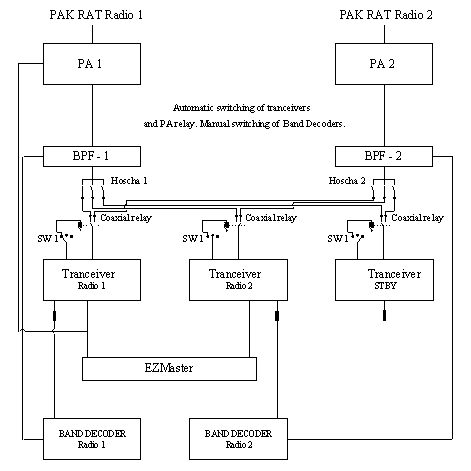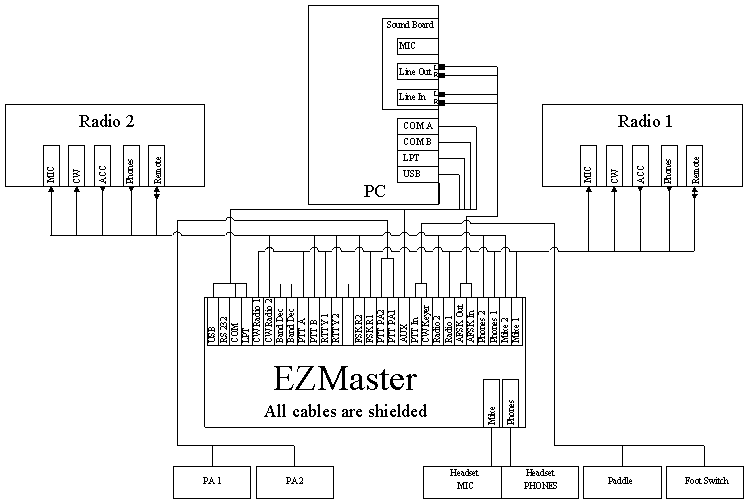|
SW1, 2 and 3 above decides which 2 of the
3 radios are to be used during the contest. It even allows you to choose
which one to use as radio 1 or 2. To enable this 3 standard 3-way switches
are built into a small box and used for each radio. The positions switchable
are Radio1, Radio 2 or Standby. This is usually set up
and tested a couple of days prior to a contest.
Radio 1 connects the RF output of
the tranceiver direct to Hoscha 1, a motor driven coaxial switch. It
also connects the PA relay circuit to PA1.
This way Radio 1 will be connected to
RatPak Radio 1 through Band Pass Filter -1 and PA 1. Alla antenna switching
is done by RatPak Radio 1.
Radio 2 connects the RF output of
the tranceiver through a coaxial relay to Hoscha 2. It
also connects the PA relay circuit to PA2.
This way Radio 2 will be connected to
RatPak Radio 2 through Band Pass Filter -2 and PA
2. All antenna switching is done by RatPak Radio 2.
The Standby position leaves this
tranceiver unconnected.
The Band Decoders are delivered by Top
Ten, www.qth.com/topten/, and serves the
purpose of automatic switching of the BPF´s, delivered by Array Solutions -
www.arraysolutions.com, as the bands are
changed. The
switching of which rig to use is done manually prior to the contest. The
EZMaster an all mode - all in one PC interface, www.hamradiosolutions.com,
which takes care of the keying and switching of the radios is described below. PA1 is
switched directly by Radio 1.
I might re-build the switching of the BPF´s and use the output from the
EZMaster instead of the Band Decoders at a later stage.
Two VFD SWR meters are connected after
the PA´s and they monitor the SWR as well as show the output power. The
relay control from the X-mitter is routed through the SWR watch of the VFD.
If a SWR above 2:1 occurs the keying of the PA is disrupted immediately. The
SWR watch can be set for various values and the PU-unit is located near the
PA and the actual meter close to the rig.. The VFD´s are obtained from Array
Solutions.
This way the PA´s are protected should
the wrong antenna be connected or a malfunction of an antenna occur.
|





